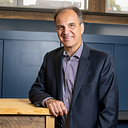Makerspaces and Indigenous Learning
“Are we recognizing that the very principles that are shaping how we are creating the 21st Century Makerspace learning environments are those same principles that have guided the indigenous peoples for centuries, the very principles and values that were taken from them when traditional school was created?” — Zoe Branigan-Pipe, Indigenous Worldviews Inspires THIS classroom MAKERSPACE (April 23, 2016) —
please use this Internet Archive link to access the expired link above.
The following post represents a “thought stream” imagining the potential of makerspaces inspired by indigenous worldviews and cultural practices: that blends the past and the future, knowledge transmission between elders and youth; a space that promotes deeper awareness of indigenous culture through collaborative “making” projects and a space to inspire innovative ideas to make the world a better place. A “re-mix” of indigenous artisanal/craft tools, traditional materials and know-how with digital technologies available in a makerspace could open up wonderfully creative project opportunities (see Tania Larsson story here).
“For Larsson — who grew up in France but later returned to her native Canada to reconnect with her culture — the act of recreating the tools was more than just a way of putting modern technologies to good use — it was a way for her to reconnect with her ancestors in ways that previously might not have been available.”
Our shared connection to the land, air and water (e.g., Water Rangers) — linking citizen science projects, culture and environmental sustainability.
Integrating traditional indigenous values with a makerspace seems to be an ideal approach for the design/development of low-cost tools and sensors for citizen science applications such as water chemistry monitoring, urban forest pest detection among other critical needs in promoting environmental sustainability.
Linking Traditional/New Materials, Indigenous Art/Craft and Digital Fabrication Tools
“But first, we must be thankful to all the ancient tribal or indigenous peoples of the world who started the concept and practice of wearables in the form of bracelets, arm bands, earrings, nose rings, neck chains, anklets, and even belly chains who were all proud to wear them for what their culture stood for.” — The Age of Wearables
An example of a potential collaborative project would be students using a makerspace to design and produce props/costumes or set designs in partnership with the NAC Indigenous Theatre launching in 2019.
Digital Storytelling and Indigenous Culture — Linking VR/AR and Mixed Reality Tools and Technologies
Digital storytelling technologies such as virtual reality are transforming the ways in which we can share knowledge and communicate messages. As an example, in 2015 the United Nations commissioned a startup to produce a mini-documentary following the story of a 12-year-old Syrian refugee to determine if VR technology “can boost philanthropy by connecting viewers more deeply to a subject.”.
Could a makerspace offer a suite of such advanced tools and technologies that students could access for developing and producing compelling storytelling to promote deeper understanding of indigenous culture and wisdom? Perhaps the development of such mini-documentaries and animated shorts could result in creative partnerships with organizations such as the Asinabka Festival here in Ottawa? Yet another intriguing possibility is the development of innovative digital storytelling associated with indigenous artifacts and applied research in museum practices.
Commons-Based Innovation and Cooperative Entrepreneurship
The hope is that a makerspace informed by indigenous worldviews (and through hands-on and collaborative learning) will help develop in students a mindset that sees change as a source of opportunity. While students typically follow the “Silicon Valley” model of entrepreneurship (i.e., startup/scaleup), such a makerspace could serve as a platform to promote the creation of social and collective enterprises that follow a triple bottom line philosophy such as The Onaman Collective co-founded by Métis artist Cristi Belcourt.
“We formed the collective for the express purpose of finding ways to connect youth to land, traditional knowledge, language and Elders through art and land-based activities.” — Cristi Belcourt
Establishing Makerspaces in Indigenous Communities
One of the possible spin-off benefits of a makerspace founded on indigenous principles and values would be the “graduation” of skilled makerspace “apprentices” who could help communities trying to support vulnerable youth establish local makerspaces in schools, libraries and community centres.
An inspiring program based in Australia — the FLINT Program at the National Centre of Indigenous Excellence — provides such training for indigenous facilitators to assist indigenous communities and organizations to engage in “maker education” projects.
Postscript (Other initiatives identified since the published date of this post)
Aboriginal Doors Program: Innovative program opens new doors to B.C.’s indigenous artists
Through the Aboriginal Doors program, indigenous carvers create door panels, which are then reproduced roughly by computer [CNC] on red or yellow cedar and finished by hand. The reproductions can be sold at a much lower price — making this authentic aboriginal art more affordable and accessible, while also allowing the artists to earn more income from their work.
FabLab ONAKI: the first indigenous Fab Lab in Canada
Located in Gatineau, FabLab Onaki is the first Indigenous Fab Lab in Canada. Offering a program anchored in cultural learning, the 5-months program offers opportunities to learn how to program and use digital equipment such as 3D printers, laser cutters, CNC routers, embroidery machines, to name a few. With half of the program dedicated to cultural learning and the other half to learning technology through sharing of knowledge and experimenting, participants have the possibility to put into practice the merging of culture and technology. The last month of the program is completed in internships with local companies or organizations that utilize the skill sets and competencies developed over the first four months. It is due to this highly adapted teaching environment that over 75% of the participants finish the program and have found fruitful employment.
